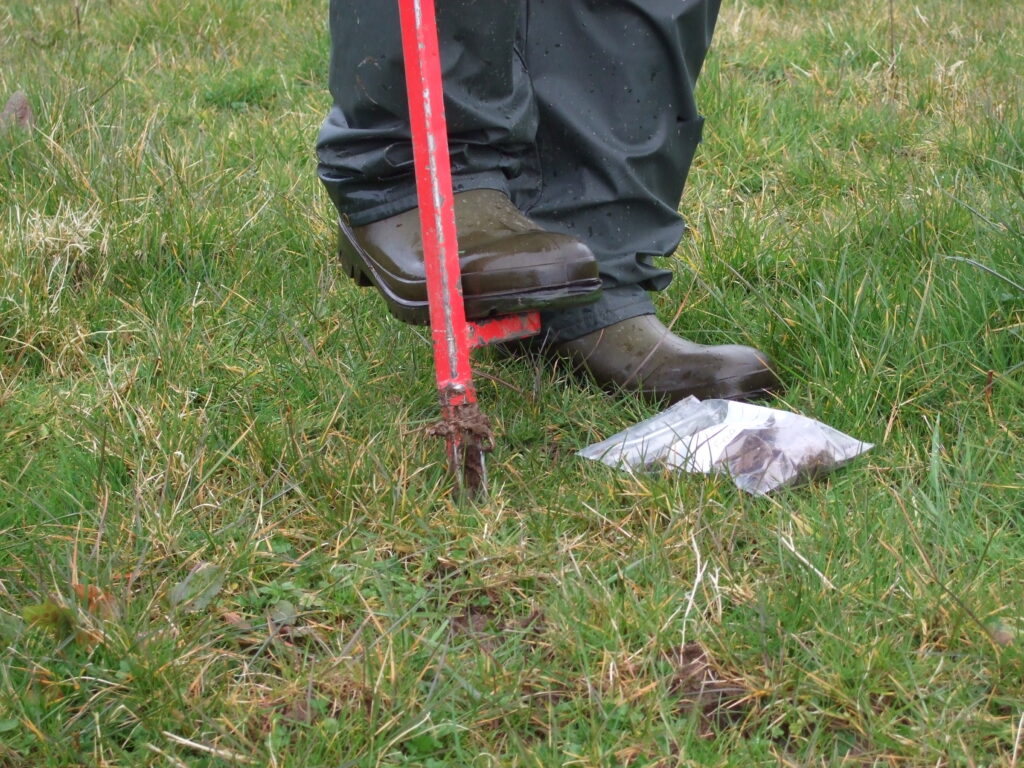Soil analysis for horse owners
April 17, 2023
Why do it?
Healthy soil supports the correct conditions for the growth of healthy grass. Poor soil nutrient levels make conditions more favourable for weeds to establish in your grassland sward. Investment in a simple soil test can help you determine the nutrient status of your soil. This will help you to match your application of fertiliser application to the soil and crop requirement.

Soil analysis will allow you to identify the nutrient levels of your soil, so you can make an informed decision on the correct fertiliser in the right quantity for your soil’s needs. In the past year, fertiliser costs have increased dramatically and there is no indication that these prices will drop anytime soon.
Without soil sampling to analyse your soil you could be applying fertiliser in areas where you don’t need it. Applying excessive amounts of fertiliser can result in a loss of nutrients from leaching. It can also cause water pollution and may lead to damage of aquatic habitats and living organisms in streams, rivers, or lakes.
How to do it?
Soil analysis is a straightforward process. One sample can cover an area up to 4 hectares, if it is managed under the same conditions. Generally, you will sample each individual paddock separately. You can identify where to take your soil sample by walking around the paddock in a W shape. Randomly, stop to collect soil samples along your path. Aim to collect 20 to 25 small samples and pool them in a bucket. Take care to avoid adding vegetation to the soil collected. When you have collected all your soil from the paddock, mix the soil well and place some of this soil in a labelled plastic bag or box (depending on the soil analysis lab requirements). Ensure you have clearly labelled the bag/box with details of the field and your own identification. This will be important when your soil analysis report is produced so that you can link the results to a specific paddock.
What tools are needed?
Use the correct equipment. You will need a tool that will allow you to take samples of soil at a depth of 75 mm and something to pool your samples and a labelled bag or box to send off your samples. You could use a soil sampling auger or a trowel for this purpose. All samples should be sent to an accredited lab for analysis.
When it needs to be done
Soil sampling is recommended to be completed approximately 3 months after the last application of fertiliser or farmyard manure. This is to ensure that recent applications don’t affect the results.
What areas to avoid?
To get the most accurate results, it is important to try to soil sample in areas that are representative of the paddock. Avoid areas around the gates or drinking troughs and areas where there have been clumps of manure.
How much will it cost?
Soil analysis is very inexpensive when compared to the cost of fertiliser and should be carried out routinely every four years. Regular soil analysis is the key to nutrient management as results are a reliable guide to assessing and monitoring soil nutrient levels and provide a sound basis for lime and fertiliser application.
What the results will show you?
The standard soil analysis report will give you information outlining the pH of the soil and the phosphorous and potassium levels.
When you get your report back?
You can use the information provided in the soil analysis to improve the soil nutrient level if required. Your report will provide recommendations on whether lime is needed to increase the soil pH. The level of the nutrients phosphorus and potassium are provided in the form of an index scale. Using these indices will inform you if your soil nutrients are deficient, optimum or in excess. Recommendation of fertiliser application will also be provided. Following the information on the soil analysis report should help you to make an informed decision as to the appropriate levels of fertiliser needed for each paddock.
A low pH can have a large impact on the grass production on your sward. An acidic pH can make the major plant nutrients (Nitrogen, Phosphorus and Potassium) less available for uptake by the grass plant roots. Although, you may have supplied the grassland with the correct levels of fertilisers, acidic soil pH can limit nutrient availability. The target soil pH for a typical grassland paddock is 6.0 -6.2 on mineral soil. Optimum pH depends on soil type. Mineral soils have a higher optimum pH for crop growth than peaty soils.
With the cost of fertilisers high, it is important to maximise the efficient use of these valuable nutrients. Nutrient management will help maximise the use of nutrients to grow healthy grass for grazing and haylage or hay production. Soil sampling will also help ensure that excess nutrients are not making their way into waterways and causing damage to the aquatic environment.
